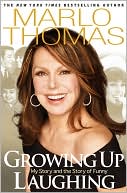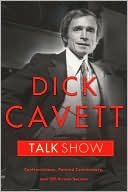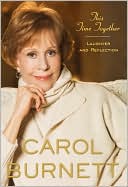Finding My Voice
In "Finding My Voice," nationally acclaimed public radio host Diane Rehm tells the story of her remarkable life - a story in three acts. First, her childhood in a traditional, Christian-Arab household dominated by her psychologically abusive and beautiful mother whose influence on her intelligent young daughter was substantial. Then, in her thirties she found her career, as the host of her own radio talk show, which 20 years later has become one of the most influential voices on radio today....
Search in google:
Diane Rehm's best-selling memoir, with a new "Questions to Ponder" section for reading groups. Publishers Weekly In a curiously unemotional account of a life rich in contradictions, the host of the nationally syndicated Diane Rehm Show on National Public Radio may leave readers wanting more. The child of a beautiful, cruel mother who beat her and used silent withdrawal as a form of punishment, Rehm built a rewarding career on talk. Her parents, both Turkish immigrants, had a loving marriage in which her mother's needs and wishes were paramount; meanwhile, Rehm and her older sister found warmth and acceptance in her father's extended family. Despite being a star pupil and, later, a smart, inquisitive woman, Rehm was insecure about her lack of a college degree. Her second marriage was to an Ivy League Washington lawyer, who also retreated into silence. At age 37, her career in broadcasting was spurred by the urging of her women's group, though Rehm says simply, "I don't know why." After 20 years on the radio, she developed a rare neurological disorder, spasmodic dysphonia, which causes hoarseness and vocal tremors. Her search for a diagnosis and the awful treatment, Botox injections, which cause temporary paralysis of the vocal chords and loss of voice, was covered in the Washington Post. Rather than delving deeply into her feelings, Rehm substitutes details about her high school boyfriends, piano lessons and prescription medicines that are less interesting than her family's mysteries, her relationship with her sister and the lessons of her marriage, which has been largely satisfying. Despite her potential to inspire others, as a self-made "late bloomer," abuse survivor and spokesperson for her disease, Rehm leaves her readers to connect the dots. Agent, Ronald Goldfarb; 10-city author tour. (Sept.) Copyright 1999 Cahners Business Information.
To this day, I have no reliable account of how my parents came to be with and love each other. Their mutual affection was always apparent, and yet they never talked about their beginnings. The circumstances that brought Eugenie Zouekie and Wadie Aed together have always been clouded in a haze of mystery, with the truth, whatever it might have been, quite probably more straightforward and understandable than my imaginings or the stories I've heard. What I do know is that my father's family was apparently fairly well off, supported by my grandfather, Solomon Aed, who was a tailor by profession. He and his wife, Nazha, lived in the city of Mersin, Turkey, located on the shore of the Mediterranean Sea. They were Christians, part of the Eastern Orthodox community. There were three brothers -- George, Toufic, and Wadie -- and four sisters -- Victoria, Julia, and twins Fahima and Wadia.\ \ Theirs was a secure life, in a comfortable home. But according to an oral history given by Wadia to her grandson, Richard Hajjar, their mother constantly talked of coming to America. "Even with the secure life that we had in Mersin," said Wadia, "my mother always had it in her heart to come to the free country of America. She was quite willing to sacrifice her life in Mersin to come to the freedom she had always dreamed about." Those of us who take life in this country for granted cannot fully appreciate the yearnings of those like my father's family, believing as they did that an opportunity to live here was worth so much effort and hardship.\ \ My father's oldest brother, George, who was seventeen at the time, came to this country in 1907. The second-oldest brother, Toufic, came in 1909. My father,Wadie, and one of his sisters, Victoria, came two years later. The plan was for the oldest children to go first so they could become acquainted with America, learn the language, and begin to build a life. Their parents had given them a sufficient amount of money on which to get a good start.\ \ The rest of the family now waited their turn to go to America, but they had to be sure that the brothers could provide for the entire group. My father and his brothers wrote frequently, relating stories of their success in obtaining work in the shoe factories of Auburn, New York, supporting themselves and putting money aside. Finally, in 1913, my father sent word to his family in Mersin that he had made the arrangements for them to come. His parents and the three remaining sisters got ready for the trip, with no certainty of just how long the voyage would be. After weeks of preparation, they left Mersin and made the three-day voyage to Beirut, Lebanon. There they were to undergo medical examinations by an American doctor to gain admission to the U.S., but they were forced to turn back because my grandfather had an eye infection. Later that year, they tried again, this time traveling from Mersin to Naples, Italy. Sadly, the infection had persisted and they were turned away a second time. They remained in Italy for a month, hoping the infection would clear, but unfortunately it didn't and they were forced to return to Mersin once again, expecting to attempt the trip again sometime the following year. But World War I intervened in August 1914. All visas to the U.S. were cut off. Meanwhile, my father and his brother Toufic, having become American citizens, were drafted into the U.S. Army.\ \ It was not until 1921 that the family finally succeeded in making the voyage to this country. They sailed from Petros, Greece, to the U.S. For one month, they saw nothing but water and sky, impatiently anticipating sight of Ellis Island. "All of a sudden," said Wadia, "there was a great cheer from the many immigrants on board. I caught my first glimpse of America. My mother stood in silence with tears of joy streaming from her eyes. Then, as my mother slowly stepped off the ship, she kneeled and very solemnly kissed the ground." At Ellis Island, they were all taken to a dormitory where they stayed overnight, awaiting yet another medical examination. They were met there by my father, whom they hadn't seen for ten years, and he assured them that everything would be fine. After passing the medical exam, they went before a judge to swear that their tickets had been paid for and that they had dollars with them. My father had to show that he had five thousand dollars in the bank to take care of the family. After this was done, the judge granted the family the necessary papers and informed them that they were the last five people to be allowed to come to America from Turkey. They had filled the quota.\ \ It has been more difficult to learn exactly how my father and his brothers spent the years in this country before the rest of the family arrived. What I do know is that the eldest, George, went directly to Auburn, followed by his brothers and sister. They went to work in one of Auburn's shoe factories, supporting themselves and putting money aside, with a dream of someday starting their own business. I can only assume that they went to Auburn because they had friends there who could help them find jobs and begin to get on their feet.\ \ After several years, George, along with his new bride, Annette, decided to move to Washington, D.C., leaving behind his life as a factory worker. How much money he had saved by this time I can't know, but it was sufficient to allow him to open a shoe repair shop of his own on Wisconsin Avenue in Georgetown. Later, he would purchase his first grocery store at Ninth and S Streets NW. Shortly thereafter, my father, Wadie, and my uncle Toufic came to Washington together with their sister Victoria and her new husband, Alexander. My father and Toufic purchased and operated a small grocery store on New Hampshire Avenue NW, and it was at this point, I believe, that my father decided to return to the old country in search of my mother.\ \ There are several versions of their meeting. One account is that the two were born in the same town in Mersin, and that Eugenie was promised to Wadie at birth. He was thirteen years her senior, and their parents were good friends. The second account (according to my sister, Georgette) is that my father had met Eugenie's parents before he left Turkey to come to the United States, and that an agreement had been reached among them that he would return for her once he'd made his fortune. So Wadie set off on a journey back to Mersin to marry Eugenie. But when he got there, he learned that Eugenie had moved with her family to Alexandria, Egypt, and that she had become engaged to someone else. By all accounts, she was deeply in love with her fiance, but under pressure from her family, she broke her engagement, married Wadie, and returned with him to the United States in 1929.\ \ Their formal wedding portrait shows a slender couple with clear eyes looking directly into the camera, slight smiles on each of their faces. She wears a simple, long, sheer, sleeveless wedding dress, scooped at the bodice. A sheer caplike veil covers her head, with her dark bangs protruding. She carries a large and beautiful bouquet of orchids and lilies of the valley, long streamers of ribbon descending onto her gown. She was twenty-two. He was thirty-five. My father's dark eyes and heavy eyebrows initially draw attention away from the fact that he is nearly bald, having lost most of his hair in his twenties.\ \ It's impossible to know whether it was a happy day for Eugenie. It was a day that meant she would be uprooted from all that she knew and loved, to follow my father across the ocean to Washington, D.C. The transition to life in the United States can't have been easy for her. As the youngest in her family, she had enjoyed the comfort and security of living with, or near to, her mother, her brother, and her sister, as well as nieces and nephews and everything that was dear to her. She married my father, perhaps against her will, and entered an already tight-knit family whose women eyed her suspiciously, even jealously. Winning the affections of my father's brothers was easy; his sisters were another matter. Perhaps there was a certain possessiveness on their part over my father, who was their youngest brother.\ \ I wish I could have seen my mother in her youth. I wish I could have heard the sound of her voice. There's a photograph of her, stretched out across large boulders in what appears to be Rock Creek Park in Washington. She's smiling and happy, a young woman enjoying herself and content to be admired by the person holding the camera. Eugenie brought with her from Egypt an innate sense of style and fashion. She cared about the clothes she wore, many of which she made, as well as her hairstyle and makeup. Her appearance didn't reflect the Old World, and therefore seemed quite different from that of the other women in the family of which she had just become a part. She was endowed with a shapely but trim figure that must have been the envy of her newly acquired sisters-in-law. The story of my mother's brassiere is an indication of just how far those feelings of rivalry were carried. I learned about this incident only recently, and it supports the impression I had through my childhood years, that my mother had reason to be wary of my father's sisters.\ \ One of my cousins, Louise Hajjar, was a child of four or five in 1930, the year after my mother came to this country. Her mother, Wadia, and Wadia's twin sister, Fahima, noticed that my mother was wearing a type of undergarment they had never seen before, a brassiere. Both were apparently very envious, but rather than ask Eugenie about it directly, they resorted to a dirty trick. According to Louise, the two sisters waited until my mother had left the apartment where she and my father were living at the time to do some errands. Then, while one of the twins kept watch, the other slipped in and "borrowed" the brassiere. It had been hand-stitched by Eugenie, copying a garment she had seen. Hurriedly, the two attempted to figure out how to reproduce it. They removed my mother's hand stitches, took the bra apart, and created a pattern from the fragments. With the glee of two successful conspirators, they managed to put it back together again and return it to its drawer before my mother got home.\ \ I was amazed when I heard the story, not only at such blatant thievery but also at having objective confirmation of what my mother was up against. The twin sisters often talked and laughed together about the incident, regarding it as one of the more successful stunts they'd pulled off as a team. Having overheard their conversation, Louise was warned in very stern language that she must never, ever repeat the tale of the stolen bra. Telling me the story more than sixty years later, Louise said, felt like an act of betrayal, an act she would never have committed had the perpetrators been alive.
Introduction3Part 1Other Voices7Part 2A Voice of My Own113Part 3Losing--and Finding--My Voice187Acknowledgments243Questions to Ponder248
\ Publishers Weekly - Publisher's Weekly\ In a curiously unemotional account of a life rich in contradictions, the host of the nationally syndicated Diane Rehm Show on National Public Radio may leave readers wanting more. The child of a beautiful, cruel mother who beat her and used silent withdrawal as a form of punishment, Rehm built a rewarding career on talk. Her parents, both Turkish immigrants, had a loving marriage in which her mother's needs and wishes were paramount; meanwhile, Rehm and her older sister found warmth and acceptance in her father's extended family. Despite being a star pupil and, later, a smart, inquisitive woman, Rehm was insecure about her lack of a college degree. Her second marriage was to an Ivy League Washington lawyer, who also retreated into silence. At age 37, her career in broadcasting was spurred by the urging of her women's group, though Rehm says simply, "I don't know why." After 20 years on the radio, she developed a rare neurological disorder, spasmodic dysphonia, which causes hoarseness and vocal tremors. Her search for a diagnosis and the awful treatment, Botox injections, which cause temporary paralysis of the vocal chords and loss of voice, was covered in the Washington Post. Rather than delving deeply into her feelings, Rehm substitutes details about her high school boyfriends, piano lessons and prescription medicines that are less interesting than her family's mysteries, her relationship with her sister and the lessons of her marriage, which has been largely satisfying. Despite her potential to inspire others, as a self-made "late bloomer," abuse survivor and spokesperson for her disease, Rehm leaves her readers to connect the dots. Agent, Ronald Goldfarb; 10-city author tour. Sept. Copyright 1999 Cahners Business Information.\ \ \ \ \ Library JournalRehm, host of her own nationally syndicated call-in talk show on National Public Radio, writes of the challenges and triumphs in her life. In the first and most fascinating section of this book, she recounts her childhood in a Syrian Orthodox household, where she endured terrifying physical and emotional abuse at her mother's hands, and her escape to the working world of Washington, DC. She then describes her beginnings in public radio as a volunteer, her rise to broadcaster, and her life as a wife and mother in a difficult marriage. In the book's final section, she writes about her battle with a neurological disorder, Spasmodic Dysphonia. Unfortunately, no transcripts are included from the radio program, in which she interviews luminaries from politics and the arts. The forced segments in which Rehm discusses her faith in God and her husband's conversion seem last-minute, as if to turn an interesting autobiography into an inspirational title. Recommended for public libraries.--Lisa N. Johnston, Sweet Briar Coll. Lib., VA Copyright 1999 Cahners Business Information.\ \ \ Kirkus ReviewsA fetching, straightforward account of the struggles and successes of a respected radio personality. Rehm, host of an eponymous National Public Radio show, offers an intimate look into her childhood, marriage, career, and battle with a rare neurological disorder that has affected her speech and thus nearly destroyed her career. Scarred by a vitriolic mother who disciplined her both physically and with icy silence, Rehm suffered from low self-esteem and guilt. Raised in a traditional Arab-American household to be a dutiful mother and wife, she broke out of a brief, disappointing marriage and sought more independence in a second one. Motherhood besieged her with loneliness and overwhelming responsibility. While her husband was absorbed in his State Department work, Rehm found solace in playing the piano, sewing, and gardening. It was only when she volunteered at a local radio station that she blossomed and filled the intellectual void in her life. Eventually landing a job as a talk-show host, Rehm both found her voice and got to interview major figures like Hillary Rodham Clinton and Carl Sagan. Ironically, at the height of her career, she had to flit from doctor to doctor desperately seeking to identify the mysterious affliction ruining her voice. When it was finally diagnosed and treated, heroic rehabilitation work was required. Returning to host her show after months of absence, Rehm became a national spokesperson for spasmodic dysphonia, contending that her disability has given added meaning to her life. Now 62, she anticipates that an aging population "will welcome more mature voices on the air." Though Rehm attributes her present emotional well-being and professional success largelyto years of therapy, credit must be given to her sheer determination and intellectual vigor, readily evident here. Told with honesty and simplicity. An articulate and inspirational travelogue of one woman's remarkable journey. (8 pages photos) (First printing of 50,000; author tour)\ \






